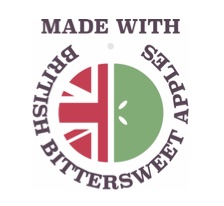As British explorers settled around the world, cider production went with them. And so did cider apple tree saplings. But the different “terroir”¹ did not always suit British varieties. Trees were mostly multiplied using cuttings and seeds and so new varieties were created. In America apples were bred that would cook well in sweet and savoury dishes and also had enough juice to ferment into alcohol, so cider was being produced from culinary apples.
In America immigration from Central and Eastern Europe saw cider replaced by lager and with the advent of prohibition, cider production collapsed and never recovered.
In most parts of the world today, cider means an alcoholic drink made with culinary or dessert apples except in the UK.
British cider apple varieties are special because they are not grown anywhere else in the world in any depth. A cider apple is distinctive from culinary and dessert apples because its flesh is fibrous, making it easier to extract the juice.
The juice from a cider apple is high in tannin, which gives the cider body and colour, and it is high in sugar but low in acidity.
